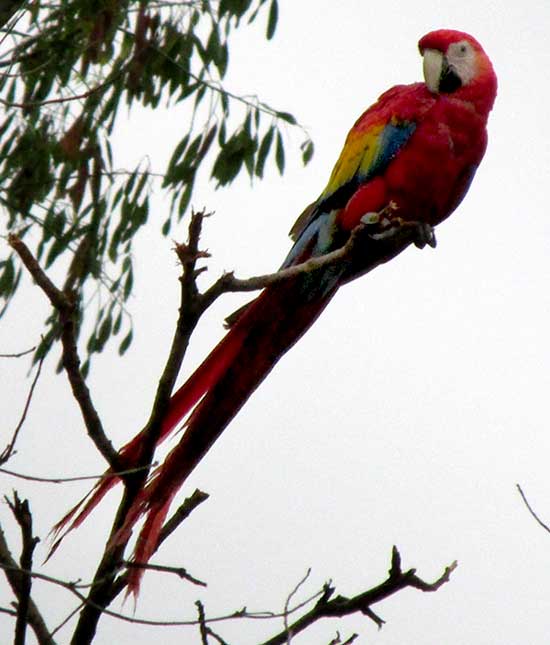Excerpts from Jim Conrad's
Naturalist Newsletter
from the April 24, 2016 Newsletter with notes from a visit to Lacanja Chansayab in the Lacandon Reserve; elevation 200m (650ft), N16.604°, W90.917°; Chiapas, MÉXICO
SCARLET MACAWS

Back in the 1970s when I served as a naturalist on Maya-ruin-visiting boat trips on the Usumacinta River just east of Lacanja Chansayab, I saw many Scarlet Macaws, even though our Maya boatmen told us that what we were seeing was just a fraction of what there used to be. At that time it was common practice for the locals to shoot Scarlet Macaws, hoping to only wound them, and then they'd nurse the birds back to health and sell them for a few dollars to dealers who would re-sell them to the pet trade up north. Macaws are monogamous and ideally they fly in pairs, but back then often you saw lone birds, and that told the story.
Last week in Lacanja Chansayab, despite knowing that I was in traditional Scarlet Macaw territory, I was surprised on my first morning when I came upon several of the birds high in a tree along the road, squawking and interacting with one another. That's one of them at the top of this page.
I didn't get more pictures because as that one was snapped a lady in a nearby hut ran out clapping her hands, yelling in broken Spanish, "Take pictures, no!" I have no idea what her problem was, but on subsequent days the macaws always appeared in the same trees, so I suppose they were semi-tame, the lady felt that they were hers, and she didn't want people standing around taking pictures of them. During my three days at Lacanja Chansayab I didn't see other macaws. Nor in the nights did I hear Howler Monkeys, though back in the 70s and even decades later they were always a conspicuous part of the night chorus.
Originally Scarlet Macaws occurred from Mexico's eastern Gulf Coast south through Central America to Amazonian Brazil. Now just pockets remain here and there, and one population extends from about Lacanja Chansayab across northern Guatemala to southern Belize, then maybe the next island population is in northern Nicaragua.